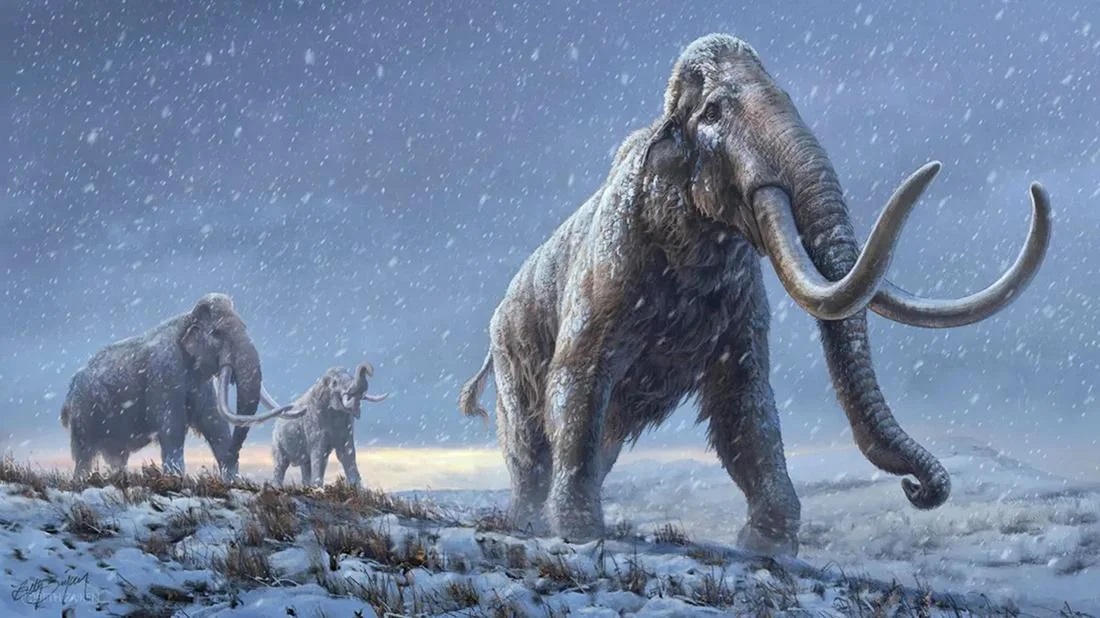
In a groundbreaking study, scientists have found a fascinating link between the movements of a 14,000-year-old woolly mammoth and the first known human settlements in Alaska. (Photo: Cosmos Magazine)
Researchers Uncover Fascinating Link Between Ancient Mammoth Trek and Early Human Settlements
In a groundbreaking study, scientists have found a fascinating link between the movements of a 14,000-year-old woolly mammoth and the first known human settlements in Alaska. Isotope analysis of a mammoth tusk found at the Swan Point archaeological site in Interior Alaska was used in the study, which was reported in the journal Science Advances. The tusk belonged to a female mammoth that scientists playfully called “Élmay³ujey’eh” (Elma). It sheds light on her 1,000-kilometer journey through Alaska and northwest Canada..
In 2009, digs at the Swan Point site found a lot of evidence, such as the bones of young mammoths that lived nearby, campfires, stone tools, and meat from dead animals. Notably, these results strongly suggest a pattern that fits with humans killing mammoths. They give us important information about how mammoths and early hunter-gatherers lived together in the area.
Isotopic data, along with archaeological evidence and DNA from other mammoths found at Swan Point, showed that early Alaskans planned their villages to be near places where mammoths liked to hang out. This finding is strong proof that mammoths and early humans lived in the same area. It suggests that the long-term presence of woolly mammoths drew humans to the area.
READ ALSO: SpaceX’s Ax-3 Astronaut Mission Launch Postponed; New Lift-Off Schedule Announced
The Alaska Stable Isotope Facility at the University of Alaska Fairbanks analyzed Elma’s tusk and gave researchers a lot of information about the mammoth’s life and trip. By looking at isotopes in samples along the tusk, researchers put together a timeline of Elma’s life, showing her 1,000-kilometer journey and that it overlapped with the movements of a male mammoth that lived 3,000 years ago.
The study shows the huge effects of climate change at the end of the ice age. The mammoths’ chosen open habitat was broken up, which could have made it easier for humans to hunt. These amazing discoveries help us learn more about the complicated relationship between early humans and the majestic woolly mammoth. They give us a fascinating look into how these two species lived together in Alaska’s prehistoric landscapes.
READ ALSO: U.S. Military Launches Aggressive Missile Strikes Against Houthi-Controlled Sites In Yemen




![Tyson Foods Plant [Photo: Food Manufacturing]](https://southarkansassun.com/wp-content/uploads/2023/08/iStock_1185520857__1_.5e441daa51cca-600x337.jpg)








![Silverado Senior Living Management Inc. [Photo: Los Angeles Times]](https://southarkansassun.com/wp-content/uploads/2023/10/download-6-4-600x337.jpg)

![China's Wuhan Institute of Virology [Photo: Nature]](https://southarkansassun.com/wp-content/uploads/2023/09/d41586-021-01529-3_19239608-600x337.jpg)















